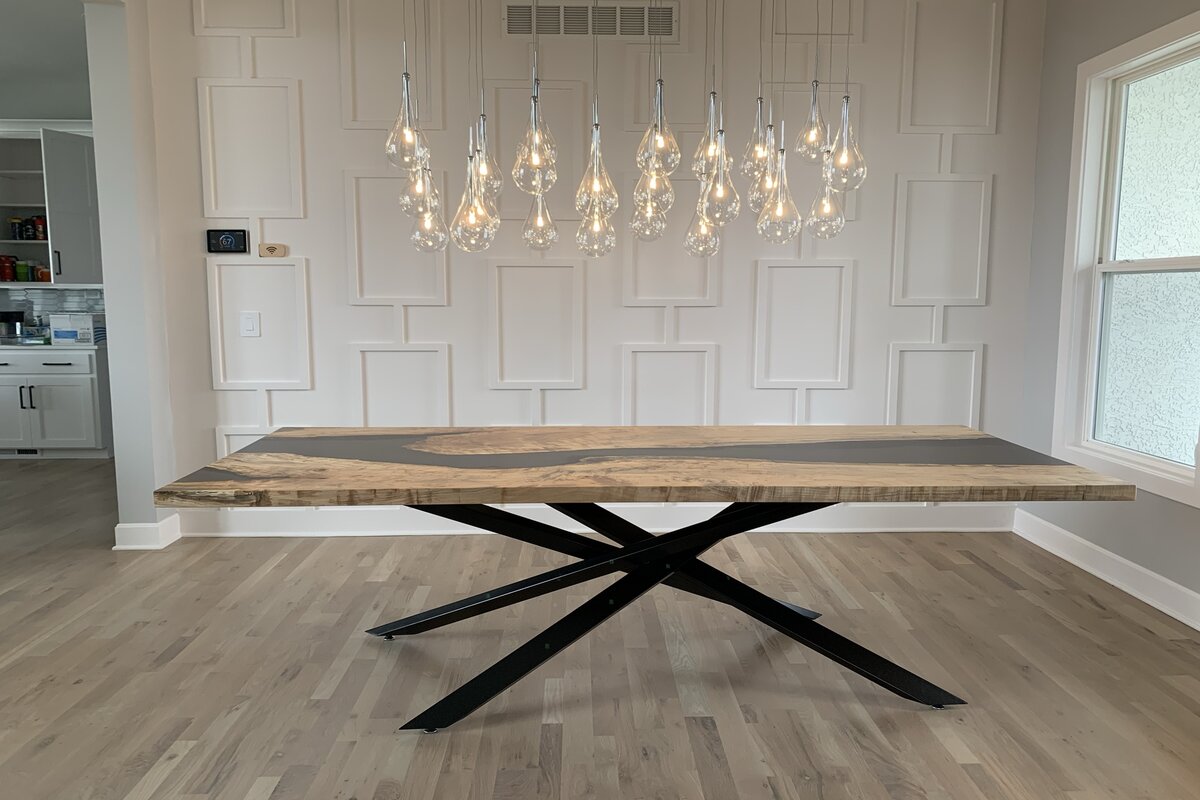Your Cart is Empty
We are hiring! Check our Job Application Page for More Info. Click Here.
We are hiring! Check our Job Application Page for More Info. Click Here.
We are hiring! Check our Job Application Page for More Info. Click Here.

December 13, 2023 2 min read
In recent years, a unique trend has emerged, blending natural wood with liquid resin to craft a stunning piece of furniture known as an epoxy river table. At its core, the table features two wooden slabs with natural edges facing inwards, creating the semblance of a river when filled with epoxy resin. The idea behind this innovative design is to expand the table's surface area using two smaller wooden pieces. The result is a captivating table design that has been turning heads for over half a decade.
Resin not only enhances the aesthetic appeal but also addresses imperfections in wood. As a liquid, resin can fill and smooth out any flaws or inconsistencies found on the live edge of the wood. This means that slabs with waviness, bizarre grain, or those that might not glue well can still find purpose in the creation of river tables. The juxtaposition of the organic wood patterns with the smooth resin creates a harmonious balance, giving birth to a functional art piece.
The art of crafting these tables is as intricate as the design itself. These pieces are a testament to the immense skill and patience required of artisans.
One cannot overlook the complexities involved in crafting an epoxy river table. The liquid nature of resin presents a multitude of challenges. For one, when resin hardens, it generates heat. This necessitates the creation of tables in temperature-controlled environments to avoid rapid cooling, which might lead to cracks or separation from the wood. The mastery of this art has been achieved through countless trial and error sessions, evolving techniques to near perfection.
With the rising popularity of epoxy river tables, many enthusiasts have attempted to DIY their creations. While some have succeeded, others have encountered issues, often seeking professional guidance to understand and rectify their mistakes. The margin for error with epoxy is wide, underscoring the importance of expertise.
A flawless epoxy river table hinges on several crucial factors:
Given these intricacies, seasoned artisans often limit the number of individuals working on an epoxy river table, ensuring that only those with ample experience handle the process.
In essence, an epoxy river table is more than just a piece of furniture; it's a convergence of nature and artistry. While they are undeniably enchanting, the journey to their creation is paved with challenges. However, with the right expertise and attention to detail, these tables stand as a testament to human creativity and nature's unmatched beauty.